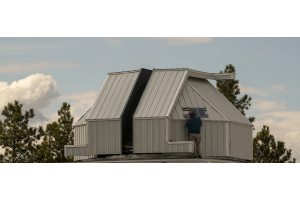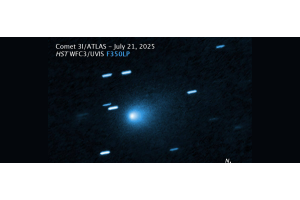moon (lunar)
The Moon is the nearest celestial body to our planet; throughout history, human beings have paid much attention to it and created witty stories, glorified legends, and serious studies. Here, pains are depicted in the imagery of the best work of art ever done, as in our literature and poetry, which linger in people's minds like the moon. Farmers use the alignments of the moon to decide planting and harvesting dates.
Formation
Why did the Moon make its way? The primary hypothesis is that a somewhat massive object, more than Mars, impacted the Earth about 4.5 billion years ago. The aftermath of the colliding objects was the matter for the formation of the Moon. As the Moon is geologically inactive with fewer evidence of internal activity and volcanic features, it indicates that it is not a very active plane.
The Moon's unusual stage is the primary key to our observed differences. Do you often think about the Moon and its strange cycle of shape transformation? This fact may manifest as the Sun's illumination direction altering due to the rotation of the Earth and Moon positions. Furthermore, the Moon turning along the Earth at the same speed enables the level of light reflected to change over this process and play an absolute role in the formation of phases throughout the day.
Earth's environment, including the sea, also experiences the Moon's power in more than just a decorative fashion. The Earth's gravity pulls the once-a-day changes in water levels of the planet’s oceans. The phenomenon has molded coastlines into how we see them and has supported the numerous forms of life occupying these environments.
The ship formed out of the moon's disk, and it saw the cratered face for the first time after too much time staring at the smooth lunar farside. And yes, although the dance of the Earth-Moon gravitational forces is incredibly complex, the resulting outcome is remarkable, the obvious being the slowdown of Earth's rotation to a whole spin and also revealing to the public the so-called dark side of our natural satellite.
Indeed, Tidal drag, a consequence of which the Earth's rotation slows down by approximately two milliseconds every 100 years, is known as 'tidal braking. What about the opposite of the moon that you cannot view from Earth? This hemisphere is not illuminated, it is observable on the side of the moon with fewer dark lowlands called maria.

Food for Thought
Why is the Moon not always visible night after night?
- As the Moon circles Earth, the side facing the Sun is visible.
- Since sunlight hits the Moon at different angles, it creates different phases as seen from Earth.
- When the Moon is close to the Sun and Earth, we see the dark side, called the new moon.
- When it's on the opposite side of Earth from the Sun, we see the fully lit side, called the full moon.
Exploration
When can that moment in the history of humankind be marked when the first human steps on the Moon? On July 20, 1969, a small lunar module, Apollo-11, landed on the Moon and made history by sending Neil Armstrong and Buzz Aldrin, the humans first to walk on the lunar surface. Thus, the Apollo 11 space mission, which became the most significant space exploration event, is the Apollo program's peak achievement. There were 5 Apollo missions flown by U.S. astronauts I between 1969 and 1972, which comprised the Americans' crewed trips to the moon and back.
Many mysteries about the Moon that remain unsolved include:
- What makes the Moon gravitate much less than Earth towards other objects?
- Does the Moon house the ice water that could be the resource for our future exploration?
- Do the caves on the Moon have a future for humankind after the creation of a Moon base?
The physiological and psychological impacts of the total isolation and confinement factors, the isolation from the familiar social support and comfort networks, and the additional challenges related to interplanetary travel present a unique set of challenges for space explorers.

The imperfect circles on their surface and Lunar craters differ in size from deep pits to larger basins, which were brought about by the impact of asteroids, comets, and other space entities. These blasts result from that energy dissipating in the surrounding substance, which undergoes subsequent melting vaporization and, in the end, is determined by the shapes of large bowl-shaped cavities with a raised rim and a central peak. Impact craters are multifaceted in size and morphological complexity, reflecting the lunar ages.
Sunlight radiating from the distant crater lets us see its freshness, with secondary craters created by ejects giving us a notion of the magnitude and direction of the impact. Lunar exploration (Apollo mission) has been the way to establish the dynamics of impact cratering. This information is included in the understanding of the structure and the past of the Moon.
Examining craters on the moon is a process that involves the prepping of future missions through the selection of outpost landing sites and the outpost sites to be built for man stations on the moon. As we continue our lunar exploration, craters will keep holding trophies for us, displaying how far the Moon has come compared to the expansion of the entire solar system.

Phases of the Moon
The last moon you should shed light on resembles the color of a ripe strawberry at the complete time of the eclipse, and this moon's name is called Red Moon, sometimes yellow. In lunar eclipse events, the Sun's line will be obstructed as its plane will cross through the Earth's substance course, and shadow Earth will cast on the Moon's surface. While some of this light is still reflected to the ground by the bending of light around the atmosphere, a large part functions as an inevitable escape.
While scattering extreme blue wavelengths in Earth's atmosphere, the red color of the remaining one finds its route to the moon as it gets blotted out during an eclipse. In addition to the Persian, we call it this Rayleigh scattering, a similar process that creates the blue of the day and sunset red-orange.
Concerning the outer surroundings of the Earth's atmosphere, the eclipse characteristics are indirectly associated with a dip in intensity, and coloration impacts these features. If the volcano eruptions and wildfires contribute to the total viewable particles in the atmosphere, then the moon would appear red and dark with many fantastic particles in the air. The "Blood Moon" idea is a kind of artistic image that somehow describes the role of the red commitment of the moon that appears in the sky, which happens when the sun's rays reflect in the atmosphere of the Earth and finally pass through it shine on the moon.

A supermoon is the moon the closest to the earth’s farthest point or a full moon. It then causes the moon to appear oversized and brighter than they would typically see without any moon visible near the horizon. Some could hear those 'technical' terms in popular language, and it is just the perigee-syzygy.
The moon experiences a supermoon effect because its path is an ellipse and line. Watching the moon huge and incredibly bright from the Earth's location is when the moon is at her point of perigee, which is the nearest it can be to the Earth.
A supermoon's caliber differs slightly from a regular full moon, a so-called 14 percent bigger size and 30 percent brighter unless looking through a telescope. But the other half of the same coin is an adrenaline rush of those who view the world in vast expanse terms and cannot resist the eclipse.
A general rule about the Supermoon does state that such an event is when the moon has become a full moon, and it stands at the boiling point where it is the nearest to the Earth, so in its perspective, it usually looks like visual interpretation much more extensive and much brighter compared to the usual full moon.
On Monday, January 13th, 2025, there will be a Lunar Occultation of Mars. During this celestial event, our Moon will eclipse Mars, completely blocking it from view.






